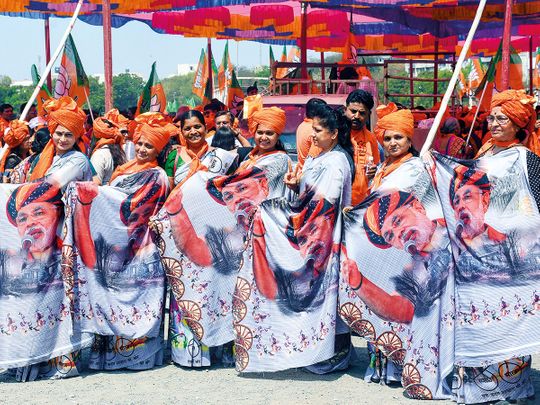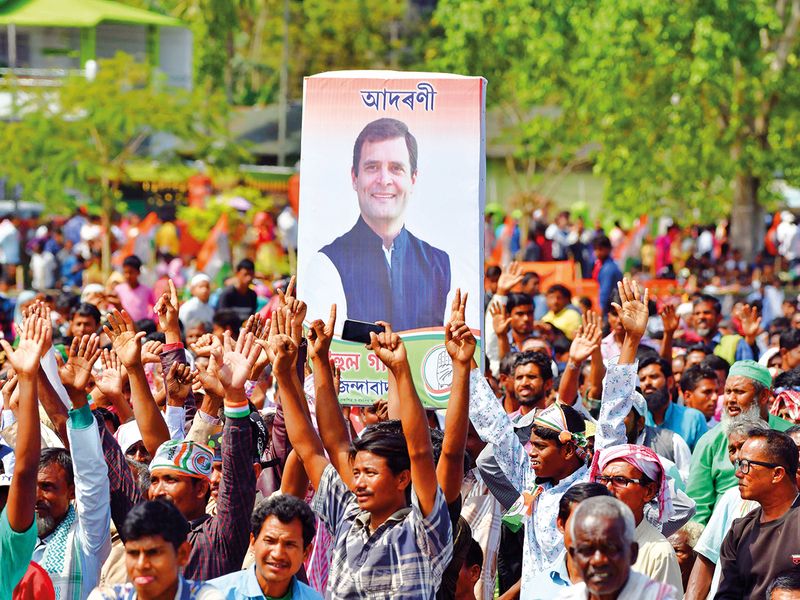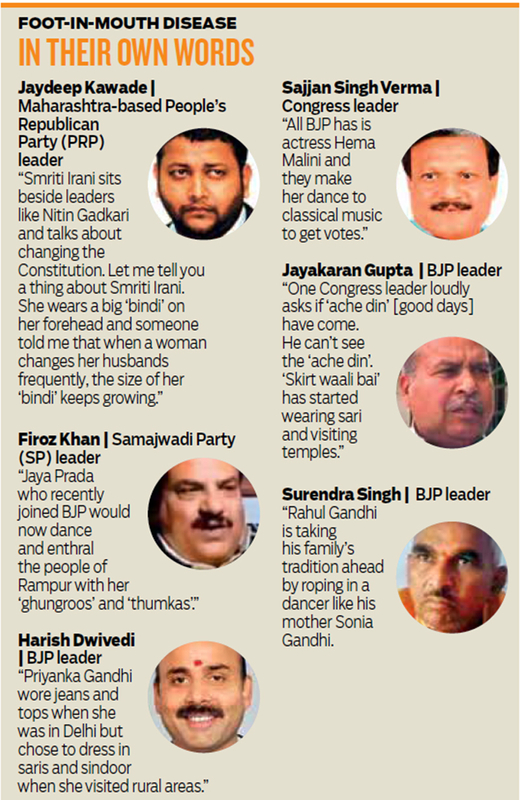
New Delhi: With barely a week to go before the start of national elections, accusations among rival candidates and parties are flowing fast and thick.
Leaders of all political hues have been caught making personal, offensive and sexist remarks which are not only insulting to women in general but also violate the moral code of conduct for polls.
Jaydeep Kawade, a leader from Maharashtra-based People’s Republican Party (PRP), became the latest politician to make sexist comments, targeting Union Minister Smriti Irani.

“Smriti Irani sits beside leaders like Nitin Gadkari and talks about changing the Constitution. Let me tell you a thing about Smriti Irani. She wears a big ‘bindi’ on her forehead and someone told me that when a woman changes her husbands frequently, the size of her ‘bindi’ keeps growing,” Kawade said at an election rally in Nagpur on Wednesday.
Irani, the Bharatiya Janata Party (BJP) candidate in Uttar Pradesh’s Amethi (UP), is challenging Congress chief Rahul Gandhi.
PRP is an ally of the grand old party in Maharashtra.
Personal digs
Meanwhile, a BJP leader stoked controversy by referring to Congress leader Priyanka Gandhi as “skirt waali bai” (skirt-wearing woman; used as derogatory term by some hardliners).
“One Congress leader loudly asks if ‘ache din’ [good days] have come. He can’t see the ‘ache din’. ‘Skirt waali bai’ has started wearing sari and visiting temples,” BJP’s Jayakaran Gupta said addressing a rally in UP’s Meerut on Tuesday.
BJP leader from UP Harish Dwivedi also made headlines last month with his comments against Gandhi’s clothes.
“Priyanka Gandhi wore jeans and tops when she was in Delhi but chose to dress in saris and sindoor when she visited rural areas,” Dwivedi said.
Referring to Gandhi, BJP’s national general secretary Kailash Vijayavargiya said Congress was fielding “chocolatey faces” due to a lack of strong political leadership.

Congress leader Sajjan Singh Verma retaliated to Vijayavargiya saying that “all BJP has is actress Hema Malini and they make her dance to classical music to get votes.”
The National Commission for Women (NCW) last week issued a notice to Samajwadi Party (SP) leader Firoz Khan and sought an explanation from him for his statement against actor-turned-politician Jaya Prada.
“Jaya Prada who recently joined BJP would now dance and enthral the people of Rampur with her ‘ghungroos’ and ‘thumkas’,” Khan had said addressing a poll rally.
Condemning the statement by Khan, the NCW asked for an explanation from him.
“These remarks are irresponsible and disparaging. They are not only sexist but also extremely offensive, unethical and show disrespect towards the dignity of women in general,” NCW undersecretary Barnali Shome told media.
Earlier, BJP leader Surendra Singh said, if Haryanvi dancer Sapna Choudhary joined Congress, it would suit the Gandhi family as she was also a dancer like United Progressive Alliance (UPA) chairperson Sonia Gandhi.
“Rahul Gandhi is taking his family’s tradition ahead by roping in a dancer like his mother Sonia Gandhi.
“Rahul’s mother Sonia was a dancer in Italy and was accepted by his father Rajiv Gandhi who later married her. Likewise, Rahul has also accepted Sapna Choudhary in his party,” Singh told media last week.
Moral code of conduct
He further suggested that Rahul should marry Choudhary.
Interestingly, many voters wonder why women politicians are at the receiving end of sexist jibes.
“I fail to understand why politicians cannot just stay off misogyny, despite the model code of conduct being in effect. The only relief is social media where people are reacting sharply to such sexism. It is time that Election Commission also takes note of such statements,” lawyer and civil rights activist Ajit Shukla told Gulf News.
No personal comments should be allowed during election campaigns. Besides, why do we need to have model code of conduct when nobody is ready to adhere to it and Election Commission simply not doing anything about it.
Architect Neena Malhotra believes politicians should be careful before making any personal or sexist comments against any women leader as such statements denigrate all women.
“No personal comments should be allowed during election campaigns. Besides, why do we need to have model code of conduct when nobody is ready to adhere to it and Election Commission simply not doing anything about it,” Malhotra said.
Architect Vinay Chauhan feels that with an increasing number of women in politics, the number of sexist comments has also increased.
“The sexist comments against women leaders have increased manifold this time. It is so funny that first the leaders make irresponsible comments and then backtrack after receiving flak and outrage on social media. Then they say that the comment was misinterpreted or not intended for anyone in particular. Such things should not be tolerated in a democracy,” Chauhan said.
Interesting facts about 2019 Lok Sabha elections
With the seven-phase Lok Sabha elections all set kick off on April 11, here is a compilation of some interesting facts about India’s general elections.
■ The first Lok Sabha elections in 1952 cost around Rs104.5 million, while the 2014 general elections cost almost Rs38.7 billion.
■ The total number of voters for the 2019 Lok Sabha elections has gone up by 84.3 million since the 2014 polls.
■ 53 parties and 533 independents contested the 489 seats in the 1952 poll. In 2014, 464 political parties and 3,234 candidates ran for the 543 seats.
■ New voters have taken the total number of voters to 900 million of which around 15 million are aged 18-19 years.
■ A total of one million polling stations have been set up this time, compared to around 900,000 in 2014.
■ In a first, candidates with criminal histories will have to publish information in this regard in newspapers and through TV channels on three occasions during the campaign period.
■ Electronic Voting Machines (EVM) and postal ballot papers will for the first time carry the photographs of all the candidates to help voters identify the political leaders in the fray.
■ The cost of the Lok Sabha elections is borne by the Government of India. Only the honorariums of the poll observers are paid by the Election Commission.
■ When general elections are held simultaneously with Assembly polls, the cost is shared by the Centre and the respective state governments on a 50:50 basis.
■ In the 2014 Lok Sabha polls, Voter-verified Paper Audit Trails (VVPATs) were used in eight constituencies. This time, VVPATs will be used in all the constituencies.
■ In Lok Sabha elections, the None of the Above or NOTA option was first used in 2014.








